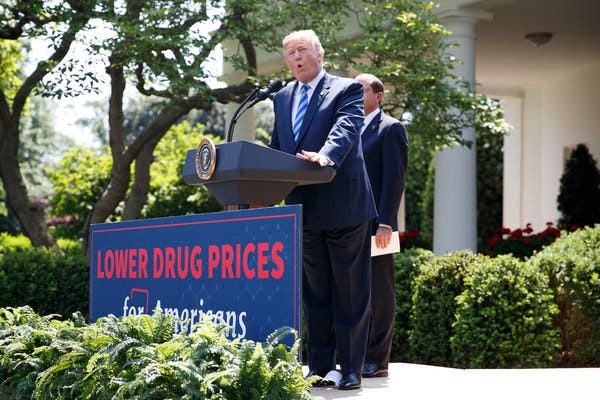President Donald Trump’s second term is shaking up Medicare, the healthcare lifeline for 68.6 million Americans, mostly seniors over 65. With the "One Big Beautiful Bill" and a flurry of executive actions, the administration is pushing changes to cut costs, fight fraud, and reshape how Medicare works. But what do these mean for you, your family, or your healthcare providers? In this exclusive Substack Blog, we break down ten major Medicare changes coming in the next few weeks and their impact. Let’s dive in!
1. Pre-Authorizations Hit Traditional Medicare: For the first time, traditional Medicare is getting pre-authorizations through a six-year pilot in six states (New Jersey, Ohio, Oklahoma, Texas, Arizona, Washington). Covering 17 services like skin substitutes and deep brain stimulation, this CMS program aims to curb overuse. But critics, like Robert Kuttner of The American Prospect, warn it adds red tape, potentially delaying care. AI-driven decisions in the process raise further concerns about impersonal denials. If you’re in a pilot state, brace for new hurdles to access care.
2. Medicare Advantage Gets a Big Boost: CMS finalized a 5.1% payment hike for Medicare Advantage (MA) plans in April 2025, the largest in a decade, adding over $21 billion for 2026. This reverses Biden-era cuts and fuels MA’s growth, with over 50% of beneficiaries already enrolled. More MA plans may pop up, offering extra benefits like dental or vision, but higher costs could strain Medicare’s budget. Watch out for restrictive networks or prior authorization snags when choosing MA.
3. MA as the Default Enrollment? The administration is eyeing a bold move: making Medicare Advantage the default for new Medicare enrollees. Using a “seamless continuation” clause, CMS could auto-enroll those with private plans into MA, with an opt-out for traditional Medicare. This pushes privatization, a key goal in Project 2025, but could limit access to traditional Medicare’s broader provider networks. If you’re nearing 65, double-check your enrollment options to avoid surprises.
4. Innovation Trials Get the Axe: The Center for Medicare and Medicaid Innovation (CMMI) will cancel six payment trials by December 2025, including Primary Care First and End-Stage Renal Disease Treatment Choices. These tested cost-saving care models, but Trump’s team says they’re too complex. Scrapping them may ease provider burdens but could stall progress on better care for chronic conditions. Patients with complex needs should monitor how this affects their providers.
5. Hospice Oversight Paused: A Biden-era program boosting oversight of hospice care, funded by $25 billion in Medicare annually, is on hold. The administration claims this targets fraud and improper billing, but the pause could weaken protections against substandard care. If you or a loved one rely on hospice, check provider credentials and push for stronger quality standards to ensure compassionate care.
6. AI to Crack Down on Fraud: The "One Big Beautiful Bill" greenlights AI to spot and recover Medicare overpayments, with CMS planning to audit all MA plans by 2026. Trump cites $521 billion in annual entitlement fraud as the driver. While this could save billions, AI’s role in care decisions worries advocates, who fear cost-cutting over patient needs. Demand transparency if AI impacts your coverage or claims.
7. More Drugs Exempt from Price Negotiation: The Senate’s budget bill includes the ORPHAN Cures Act, exempting drugs for multiple rare diseases from Medicare price negotiations. This could cost Medicare billions, benefiting Big Pharma but potentially raising drug prices for seniors. While insulin’s $35 cap remains safe for now, this rollback could weaken savings from the Inflation Reduction Act. Urge Congress to protect price controls to keep meds affordable.
8. Anti-Obesity Drugs Get Coverage: CMS has proposed covering anti-obesity medications like Wegovy for long-term weight management—a major shift. If finalized, this could help millions but add $25 billion to Medicare’s costs over a decade. If you have obesity-related conditions, talk to your doctor about eligibility. Taxpayers, however, may balk at the price tag for this new benefit.
9. Part D Cost Cap Inches Up: Starting in 2026, the Part D prescription drug out-of-pocket cap will rise to $2,100, up $100 from 2025’s $2,000 limit. This inflation-adjusted tweak offers cost predictability but slightly increases expenses for seniors with high drug needs. If you’re on costly meds, budget for this change and explore assistance programs to ease the burden.
10. Sequestration Cuts Loom: The "One Big Beautiful Bill" could balloon the deficit by $2.3 trillion, triggering automatic 4% Medicare payment cuts ($500 billion from 2026–2034) under the Statutory Pay-As-You-Go Act. Without Congressional action, providers could face reduced payments, limiting care access. Seniors should contact lawmakers to shield Medicare from these cuts and protect service quality.
What’s at Stake? Trump’s Medicare changes aim to streamline costs and promote private options, but they risk shifting burdens to seniors, restricting care, and prioritizing profits. The coming weeks are pivotal as Congress debates the "One Big Beautiful Bill" and CMS rolls out new rules. Beneficiaries must stay informed, connect with groups like AARP, and reach out to representatives to shape Medicare’s future.
Join the Conversation! Subscribe for deep dives into how these changes affect you. Comment below or share your thoughts on X: How will Trump’s Medicare plans impact your healthcare? What changes worry or excite you? Let’s get this discussion going!




